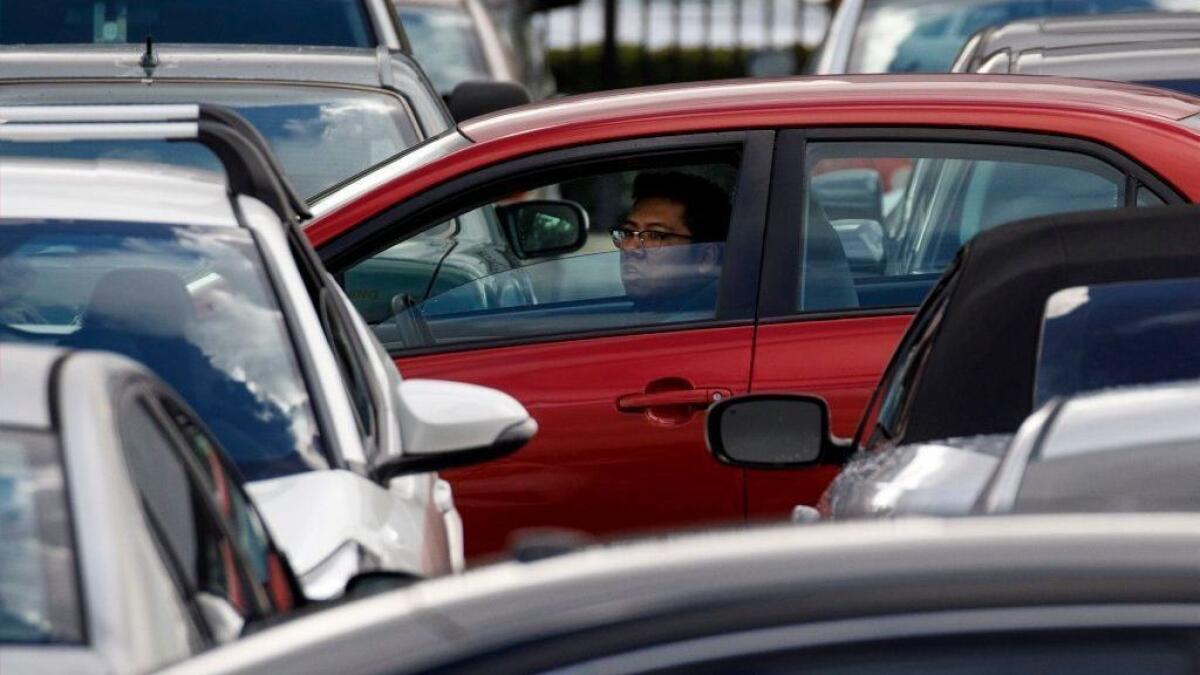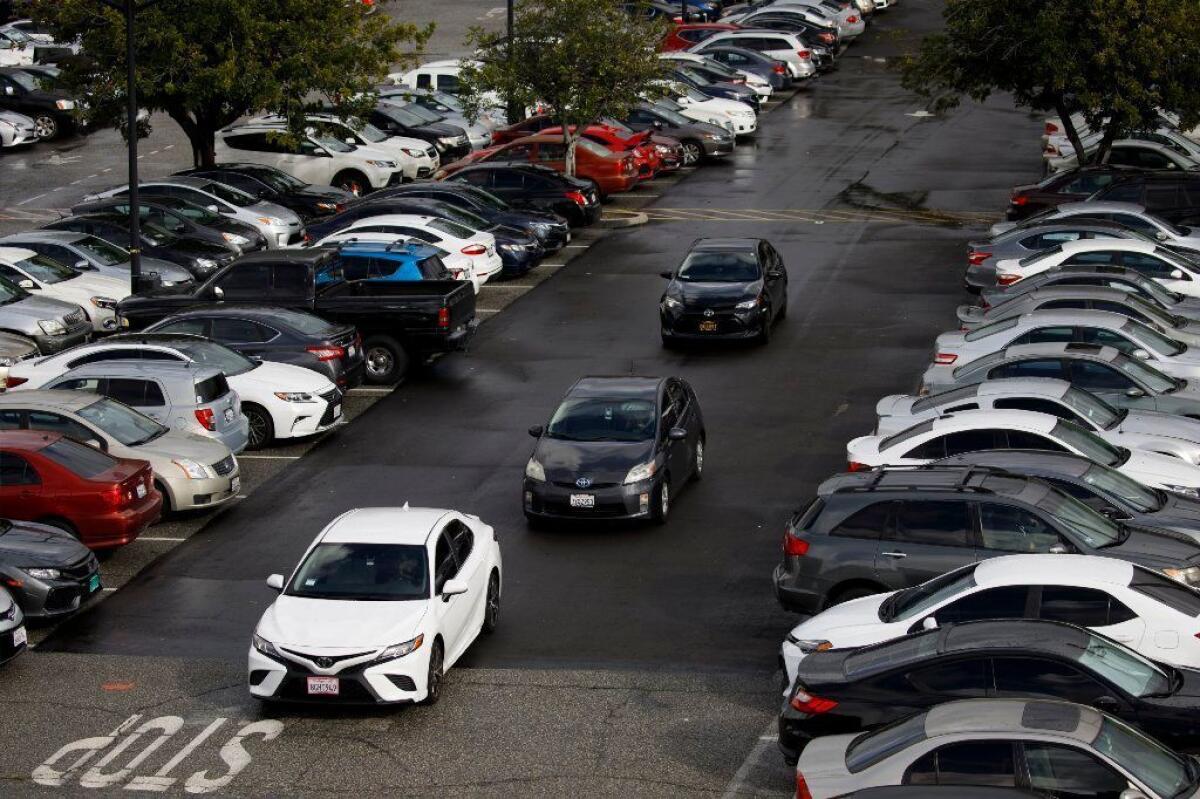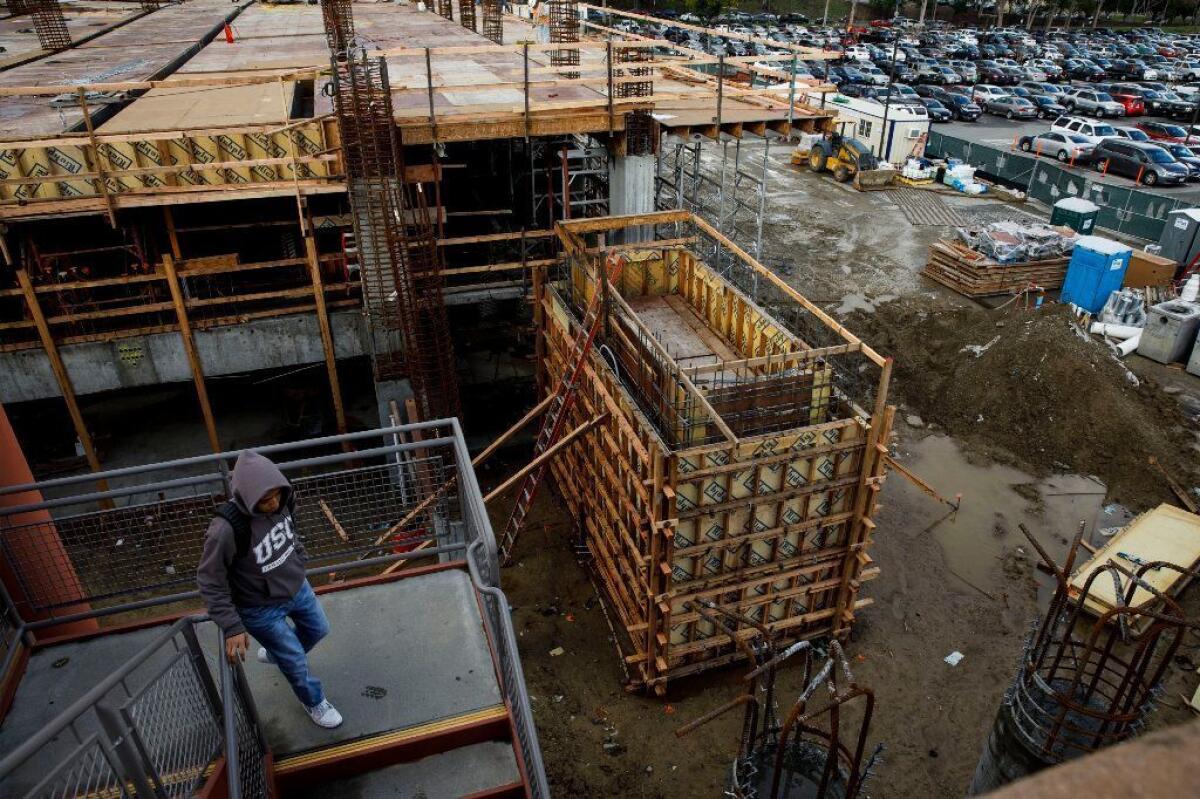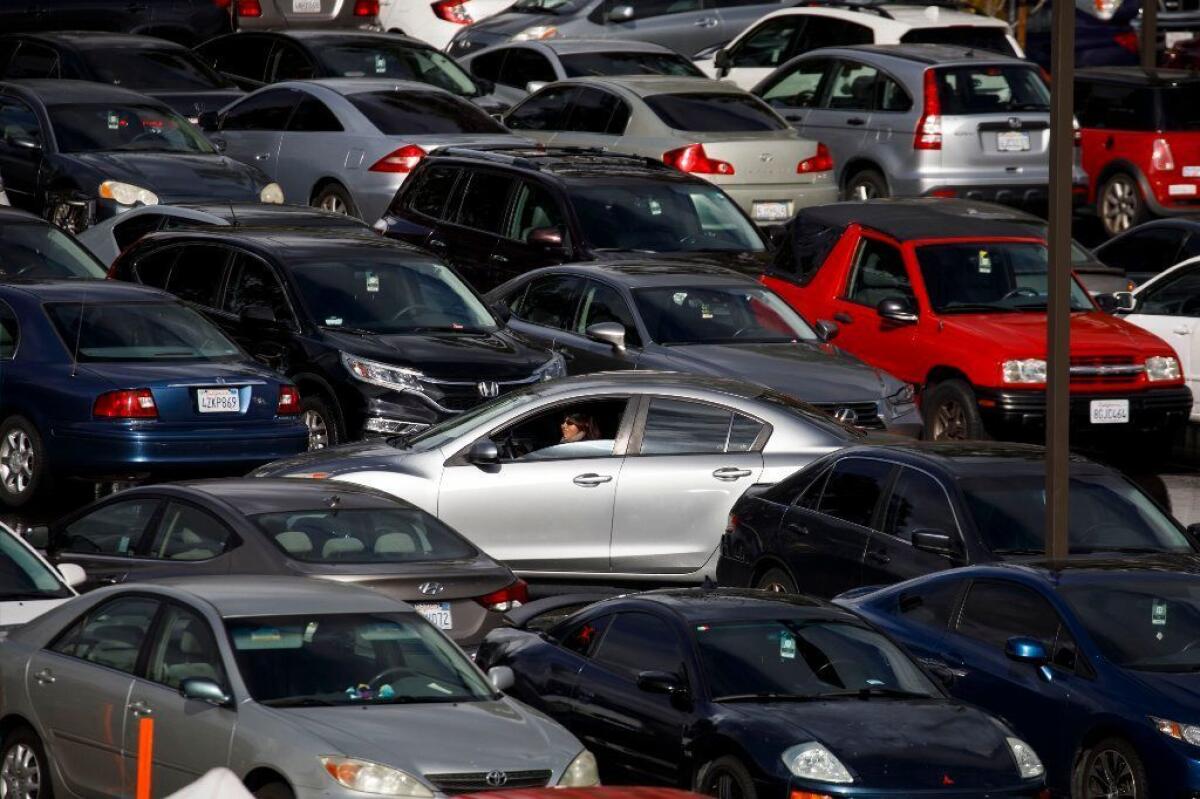At Cal State L.A. and other campuses, parking is high-demand real estate

- Share via
Four years ago, Anahi Olide would drop off her young son at day care and then head straight back home for several hours before driving 10 minutes to Cal State Los Angeles for class.
Those days are over.
In order to snag a parking space before the tsunami of cars shows up, the 22-year-old child development major goes straight to the school after dropping off her now 5-year-old boy just before 8 a.m. She hews to this ritual even though her first class doesn’t start until 1 p.m.
“It was not that bad when I first started here,” Olide said. “I mean it was full, yeah, but if you drove around a few times you would eventually find a parking space. Now, it’s really ugly.”
At Cal State L.A., the busy lots, often chock-full by midday, are now a daily reality for students, who have taken to social media to vent about the parking gantlet they often must go through just to get to class. The university has partly closed two large parking lots because of construction projects, resulting in the temporary loss of about 1,200 spaces over the last year, said Cal State L.A. spokesman Robert Lopez.
The challenge is far from unique to the L.A. campus. Several California State University campuses, like some University of California campuses, have large commuter populations. That’s especially true of universities in large urban areas, including Long Beach, where relatively few students live in campus housing.


The first eight weeks of the fall semester at Cal State Long Beach are particularly busy, said Robyn Ames-Woodyard, campus director of operations. This past fall the university rented an overflow parking lot off-site just for those eight weeks and ran shuttles to and from campus.
Cal State Long Beach spokesman Andrew Edwards said parking is “pretty much a constant issue for us.”
Cal State Northridge has roughly 13,000 parking spaces but hosts 40,000 students and more than 4,000 faculty and staff, “so we have to be creative,” said Carmen Chandler, a university spokeswoman.
To help deal with congestion, Cal State Northridge launched an app that provides information about how many spaces are available in lots so students waste less time driving around looking for parking, Chandler said.
Like other universities, Northridge and Long Beach employ strategies in line with the system’s sustainability goals, including ways to get students out of their cars through public transportation incentives and carpools.
But it’s a balancing act for campuses to provide enough parking while encouraging behavior that is good for the environment.
“Campuses are between a rock and a hard place. We want students to be able to come to campus and to not feel frustrated when they get here,” said Gerard Wellman, an associate professor of public administration at Cal State Stanislaus who studies transportation policy.
The mental toll parking takes on students can play a role in their decision to stay committed to education, Wellman said. But, he added, it’s hard to get people to give up their cars, even if it mitigates some of the hassles of commuting.
“As Americans, we like to park within sight of the building we’re going to. But that is not only expensive and impractical, it’s also incredibly unsustainable,” Wellman said. “We do this, even though it has a detrimental impact on the natural environment, because we are so ingrained and acculturated in the custom of being able to park wherever we want.”
On social media, many students complain that universities sell more parking permits than they have spaces. But Lopez, the Cal State L.A. spokesman, said it’s typical to sell more passes than parking spaces because not everyone is on campus at the same time. Cal State L.A. sold 9,184 parking passes this semester to students and employees for its total of 6,460 on-campus spaces. Each year, Cal State Long Beach sells about 22,000 passes for 14,000 parking spots.
Lopez emphasized that the parking situation is temporary. This fall, the university plans to reopen one of the parking structures, closed in March 2018 and expanded to about 2,200 spaces, giving the campus a net gain of 1,020 spaces, he said.
The other lot, which was closed in December, will be built into an eight-story student housing complex to accommodate the university’s enrollment, which has increased by roughly 25% since 2012, Lopez said. The housing project, scheduled to open in spring 2021, would provide an additional 1,500 beds for freshmen and sophomores.

In the meantime, some Cal State L.A. students and staff say they avoid campus parking altogether.
Zia Polanco, 22, refuses to buy the $200-a-semester student parking permit and instead parks for free in the residential neighborhood next to campus. On-campus parking is a mess, she said.
On a recent Monday morning, Polanco parked on a street at the base of a hill before undertaking the steep hike to the upper campus for a yoga class she was already late for.
“It’s not worth it to deal with this,” she said as she surveyed the packed parking structure.
But this adaptation to congested parking has resulted in pushback from residents, who in August successfully petitioned the city for restrictions on some streets.
Unlike Cal State L.A. and Northridge, which are both building new parking structures, the Long Beach campus has no plans to add any.
Ames-Woodyard said accommodating more vehicles goes against campus carbon neutrality goals. She added that construction is costly and would further raise the price of student parking permits, which are already set to increase to $165 from $140 next year.
As construction continues at Cal State L.A., the university has opened an off-site parking lot that holds 500 cars — connected to campus by a continuous shuttle. The university also provides free valet services in parking lots in order to pack in more vehicles.
Meanwhile, the school keeps stressing public transportation, advertising student discounts on Metro and Metrolink passes.
“We’re taking all of these measures,” Lopez said, “because we really want to make sure people can park.”

More to Read
Sign up for Essential California
The most important California stories and recommendations in your inbox every morning.
You may occasionally receive promotional content from the Los Angeles Times.














